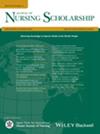Applying natural language processing to understand symptoms among older adult home healthcare patients with urinary incontinence
Abstract
Introduction
Little is known about the range and frequency of symptoms among older adult home healthcare patients with urinary incontinence, as this information is predominantly contained in clinical notes. Natural language processing can uncover symptom information among older adults with urinary incontinence to promote holistic, equitable care.
Design
We conducted a secondary analysis of cross-sectional data collected between January 1, 2015, and December 31, 2017, from the largest HHC agency in the Northeastern United States. We aimed to develop and test a natural language processing algorithm to extract symptom information from clinical notes for older adults with urinary incontinence and analyze differences in symptom documentation by race or ethnicity.
Methods
Symptoms were identified through expert clinician-driven Delphi survey rounds. We developed a natural language processing algorithm for symptom identification in clinical notes, examined symptom documentation frequencies, and analyzed differences in symptom documentation by race or ethnicity using chi-squared tests and logistic regression models.
Results
In total, 39,179 home healthcare episodes containing 1,098,419 clinical notes for 29,981 distinct patients were included. Nearly 40% of the sample represented racially or ethnically minoritized groups (i.e., 18% Black, 14% Hispanic, 7% Asian/Pacific Islander, 0.3% multi-racial, and 0.2% Native American). Based on expert clinician-driven Delphi survey rounds, the following symptoms were identified: anxiety, dizziness, constipation, syncope, tachycardia, urinary frequency/urgency, urinary hesitancy/retention, and vision impairment/blurred vision. The natural language processing algorithm achieved excellent performance (average precision of 0.92). Approximately 29% of home healthcare episodes had symptom information documented. Compared to home healthcare episodes for White patients, home healthcare episodes for Asian/Pacific Islander (odds ratio = 0.74, 95% confidence interval [0.67–0.80], p < 0.001), Black (odds ratio = 0.69, 95% confidence interval [0.64–0.73], p < 0.001), and Hispanic (odds ratio = 0.91, 95% confidence interval [0.85–0.97], p < 0.01) patients were less likely to have any symptoms documented in clinical notes.
Conclusion
We found multidimensional symptoms and differences in symptom documentation among a diverse cohort of older adults with urinary incontinence, underscoring the need for comprehensive assessments by clinicians. Future research should apply natural language processing to other data sources and investigate symptom clusters to inform holistic care strategies for diverse populations.
Clinical Relevance
Knowledge of symptoms of older adult home healthcare patients with urinary incontinence can facilitate comprehensive assessments, health equity, and improved outcomes.

 求助内容:
求助内容: 应助结果提醒方式:
应助结果提醒方式:


